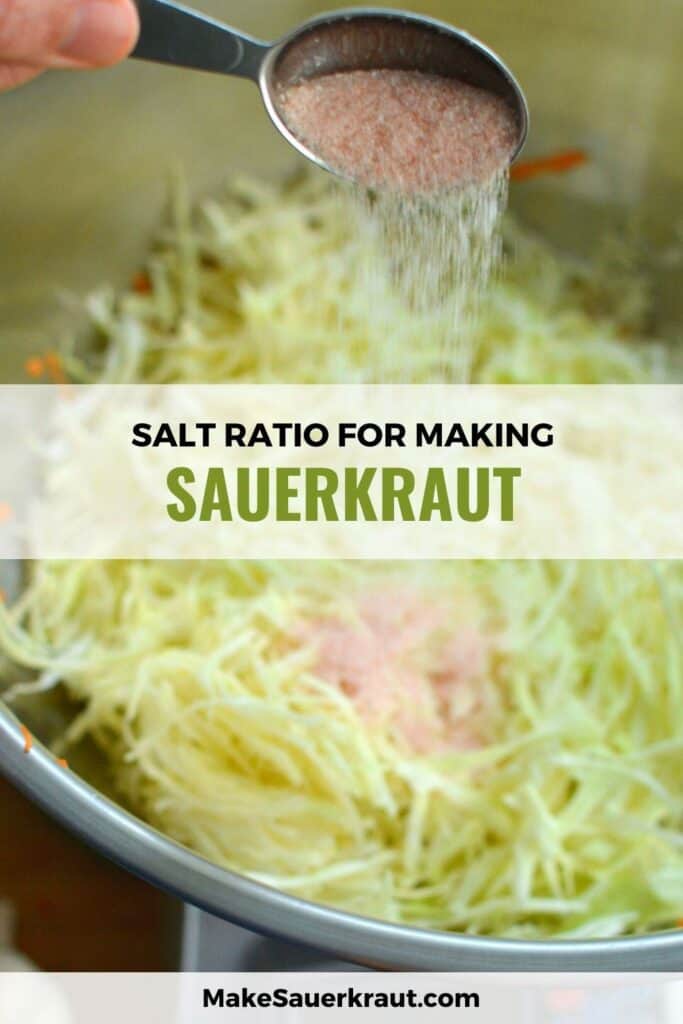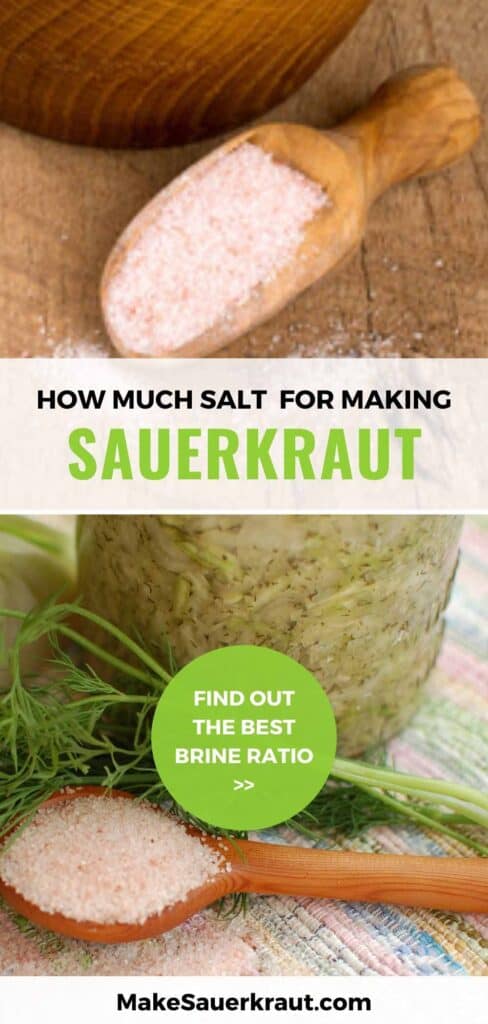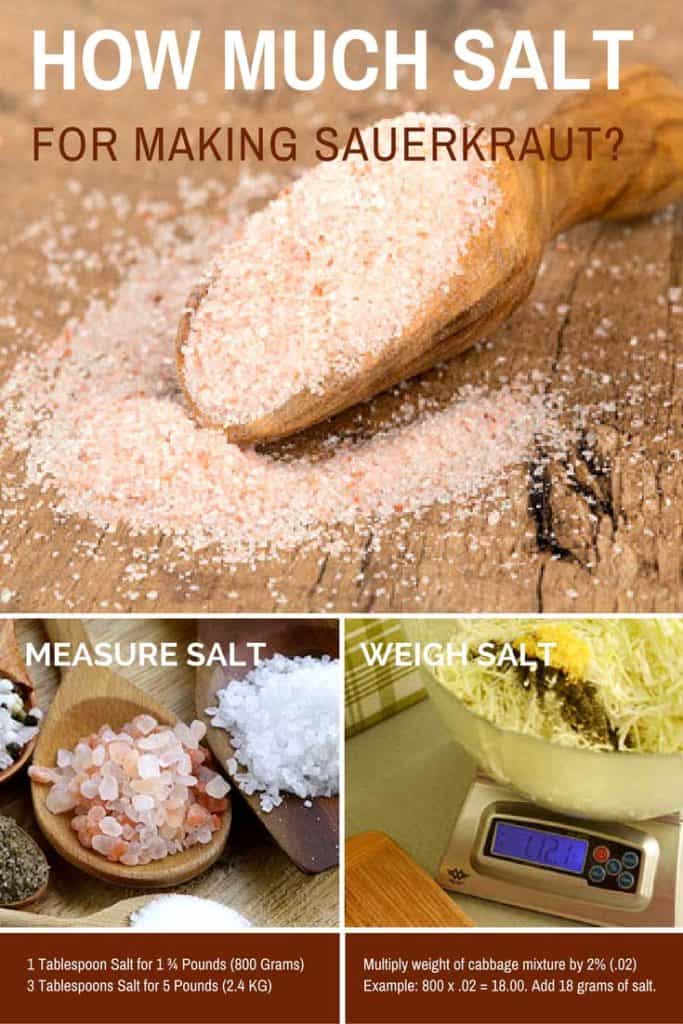Have some of your batches of sauerkraut turned out mushy or slimy?
Were some too salty?
Were some covered in mold that forced you to throw out that sauerkraut that you invested so much time and money to make?
These mishaps are usually due to one or more of the following factors:
- Salinity. How much salt was used in the cabbage and vegetable mixture (too much or too little)?
- Temperature. How warm or cold your fermenting environment was (too warm, too cold, too variable)?
- Time. How long you fermented (too short or too long)?
I find salinity to be the most important factor, with the temperature a close second.
FREE PDF Download
Use the button below to grab my handy Best Salt & How Much Salt PDF.
Why Do You Need Salt Anyway?
Salt pulls water out of the cabbage and vegetables to create a brine that the cabbage mixture is packed in. A fermentation weight of some sort is placed on top of this packed mixture to keep your ferment safe from airborne yeasts and molds.
We need that brine. It is under that brine that our ferment stays safe.
This briny environment is where the good bacteria (mainly lactobacillus) can grow and proliferate and the bad bacteria die off.
The success of your lacto-fermented sauerkraut depends on using the proper amount of salt for the quantity of vegetables you’re fermenting. This applies not just to the cabbage but to the other vegetables and seasonings, you add, too.
The amount of salt used affects the rate at which fermentation proceeds, the quality of the fermentation environment, and the types of microorganisms that will grow and thrive there.
Learning to calculate and add the correct amount of salt is important for many reasons.
Create enough brine
Salt helps pull water out of the cabbage and vegetables to create an environment—a salty brine—for happy fermentation.
Reduce chances of mold
Too little salt is a “Come and live here.” invitation to the “nasties” (mold or slime) that you don’t want in your jar.
Create a nice, crisp texture
Too little salt inhibits or prevents fermentation and tends to create softer sauerkraut. And… if you prefer sauerkraut with less crunch, you can use a tad less salt.
Control the rate of fermentation
The amount of salt you use determines the rate at which fermentation takes place.
Too much salt is a “Go away.” sign for the beneficial bacteria, the lactobacillus that you want living and multiplying in your jar. Fermentation slows way down or doesn’t happen at all.
Not enough salt and fermentation proceeds too rapidly, and the sauerkraut turns out soft and mold is more likely to grow.
The Sweet Spot: A 2% Brine
The best fermentation results are achieved with a 2% brine. This is your “sauerkraut salt percentage” or, more accurately “salt concentration.”
The easiest way to think about this is in grams.
For every 100 grams of cabbage, you need 2 grams of salt (100 grams x .02 = 2 grams).
You won’t have to do these calculations; my recipes are already set up to achieve this 2% brine ratio. I’m just trying to give you an understanding of where the salt measurements come from and why the amount is important.
A 2% brine ratio ensures a happy fermentation environment and results in crispy, tangy sauerkraut. You will need a scale to weigh your vegetables, as I discuss here.
How much salt per pound of cabbage?
1 tablespoon (16 grams) of salt for 1¾ pound of cabbage & other ingredients.
Or, if you are working in grams—MUCH easier:
1 tablespoon (16 grams) of salt for 800 grams of cabbage & other ingredients.
To make a quantity of sauerkraut that will fit in a 1-quart (liter) jar, you will need 1 tablespoon of salt for every 1¾ pounds (800 grams) of vegetables. These are the quantities I use because this amount fits perfectly into a 1-quart jar—the right size for the beginning fermenter.
Although you can use just about any salt—as long as it does not contain iodide or other additives—my favorite is Himalayan Pink Salt. My post on the best salt for sauerkraut covers all your options.
3 Ways to Determine How Much Salt to Add to a Ferment
There are three ways to determine the proper amount of salt: Taste, Volume, and Weight. Volume is the method I use and teach on this website.
Taste

To add salt by taste to your ferment, you slice your cabbage and vegetables, sprinkle on some salt, mix well, and taste.
If it tastes salty like a potato chip, you have the right amount.
If it tastes overly salty, like seawater, you’ve added too much salt and need to adjust the quantity of your ingredients. Add some more sliced cabbage, mix, and taste again.
You can make sauerkraut this way, and I did so for years. But, some of your batches may turn out too salty, some too soft, and some may mold.
All of our tastebuds and what tastes salty to one person may not to the next. In addition, people with adrenal fatigue may crave salt or salty foods and not be able to accurately rate how salty something tastes.
Volume
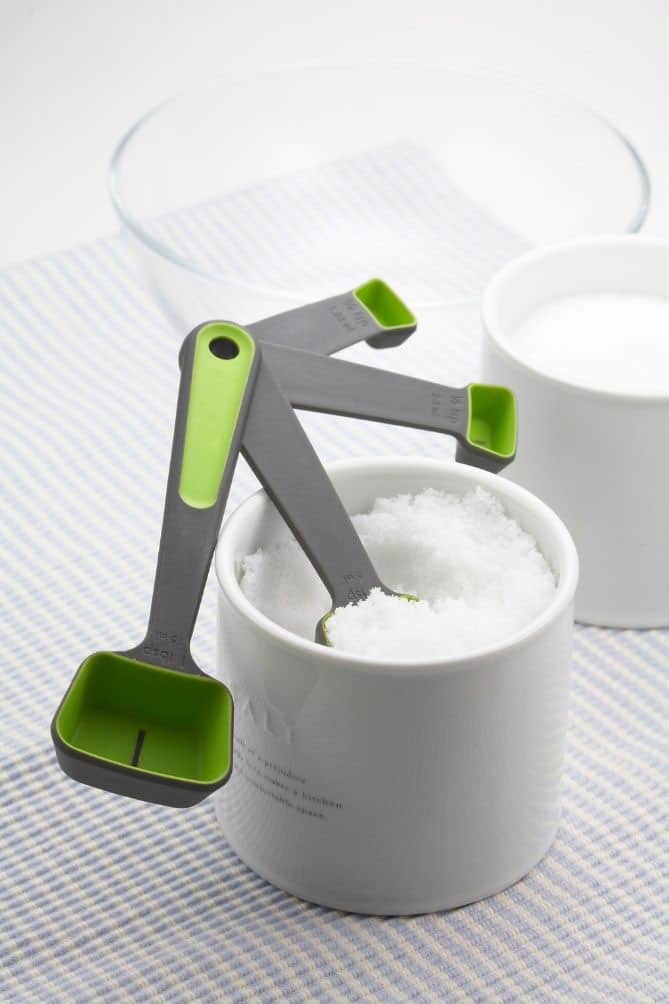
To add salt by volume, you weigh your cabbage and ingredients and then add a set amount of salt using a measuring spoon. The size of your measuring spoon is the volume of salt you are adding.
Microbiologists have determined the correct amount of salt to add with the range being 1.5% to 2.5%.
For a one-quart (liter) batch of sauerkraut, you weigh 1 ¾ pound (800 g) of vegetables and add 1 tablespoon of salt.
One drawback to calculating salt by volume is that not all tablespoons are the same size. In Australia, a tablespoon is 20 ml; in Great Britain, 17.7 ml (at least historically): in North America and elsewhere, 14.7 ml. That’s a 25% difference in tablespoons between the U.S. and Australia.
You’ll want to know the volume of your tablespoon when measuring salt by volume. I have two sets and have always thought one looked a bit larger than the other. It is!
Another drawback to calculating salt by volume is that different salts weigh different amounts. This is due to variances in grind size, density, and moisture content. You’ll fit less of a large grain of salt into your tablespoon than you will a fine grain.
Weight
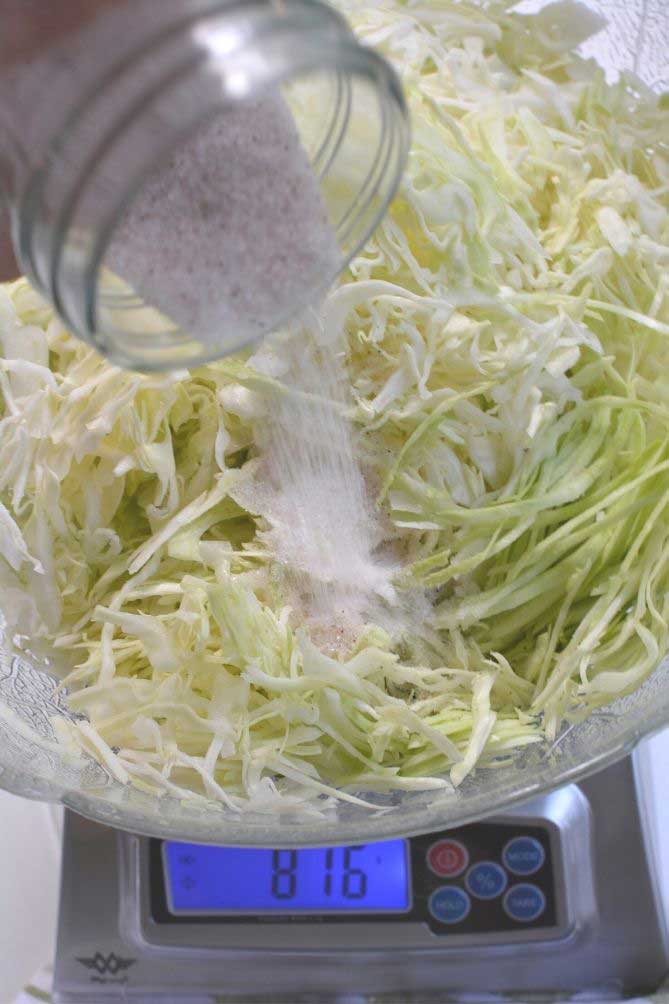
To calculate how much salt to add using weight, you weigh BOTH your ingredients AND your salt.
First, weigh your vegetables in grams and then multiply their weight by 0.02 (that is, 2%) to get the required amount of salt in grams.
For example, 800 grams of vegetables would require 16 grams of salt or 800 x 0.02.
Learning to calculate salt by weight can be a game changer. It takes the guesswork out of fermentation and enables you to easily adjust batches for fermentation temperature or sweet ingredients.
If you’re fermenting in cooler weather, you can use a tad less salt: 1.5%.
If you’re fermenting in warmer weather, you can use a tad more salt to slow the fermentation down a bit: 2.5%.
Sweet vegetables or fruits (beets, carrots, apples, dried fruit) in a ferment give the bacteria more sugar to eat and can speed up fermentation or give the alcohol-producing bacteria an edge. To slow things down a bit use a tad more salt: 2.5%.
TABLE: How to add salt by taste, volume, or weight
| Taste | Sprinkle 1–-2 pounds of cabbage/vegetable mixture with 1 Tbsp salt and taste. It should taste salty, but not offensively so. Add more salt or more vegetables, if necessary. |
| Volume | 1 Tbsp salt for 1 ¾ pound (800 g) of cabbage/vegetable mixture to make 1 quart of sauerkraut. 3 Tbsp salt for 5 pounds (2400 g) of cabbage/vegetable mixture to make 3 quarts of sauerkraut. |
| Weight | 2% salt by weight (Use a digital scale set to grams.) 16 grams of salt for 800 grams of cabbage/vegetable mixture to make 1 quart of sauerkraut. |
| Extra Brine | 1 Tbsp salt in 2 cups water. Use this mixture if you need to add more brine during the first 10 days of the fermentation process. |
Frequently Asked Questions about How Much Salt for Fermentation
Yes, you can rinse your sauerkraut if you find it to be too salty. This will remove some, but not all, of the beneficial probiotics.
You can also disperse the salty flavor by mixing it into a salad or even mixing it with another batch of sauerkraut.
Sauerkraut will taste salty due to it being fermented in salt. However, it should not taste overly salty. There are a couple of reasons for a finished batch of sauerkraut to taste too salty.
One, Too much salt was added.
Two, Not enough lactic acid was produced during the fermentation process. During fermentation, the bacteria eat the sugars in the cabbage and produce lactic acid to give sauerkraut its tang and mask the salty taste. Not fermenting long enough or not using cabbage with enough sweetness could be the cause.
If you’re fermenting in cooler weather, you can use a tad less salt: 1.5%.
If you’re fermenting in warmer weather, you can use a tad more salt to slow the fermentation down a bit: 2.5%.
2.0% by weight for the amount of cabbage/vegetables you’re fermenting. Or,
1 Tbsp salt for 1 ¾ pound (800 g) of cabbage/vegetables to make 1 quart of sauerkraut.
3 Tbsp salt for 5 pounds (2400 g) of cabbage/vegetables to make 3 quarts of sauerkraut.
Grab a scale—or learn more about my favorite scale, weigh out your cabbage, sprinkle it with just the right amount of salt, and let me know the results. Tangy with just the right crunch?
Want help selecting a scale to buy? See:
Fermenting Supplies for Sauerkraut & Vegetables [The Classics, The Latest, The Greatest]
Want help choosing what salt to use? See:
What is the Best Salt to Use When Making Fermented Sauerkraut?
Or, want to just follow a recipe with it all figured out for you?
How to Make Sauerkraut in a Jar in 7 Simple Steps [Healthy, Flavorful, Easy]
I’ve got you covered. Just follow my recipe. It uses not too much salt… not too little salt… but, just the right amount!
FREE PDF Download
Use the button below to grab my handy Best Salt & How Much Salt PDF.
Last update on 2024-04-19 / Affiliate links / Images from Amazon Product Advertising API

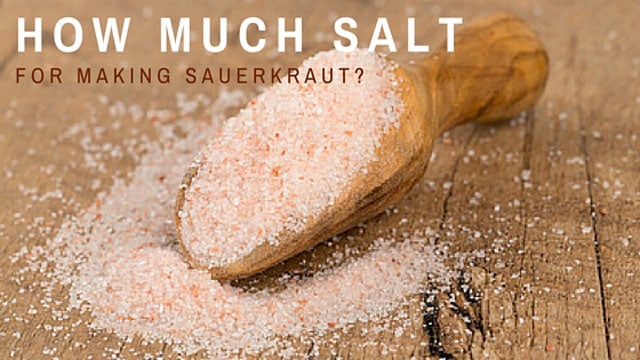

 This post may contain affiliate links which won’t change your price but will share some commission.
This post may contain affiliate links which won’t change your price but will share some commission.